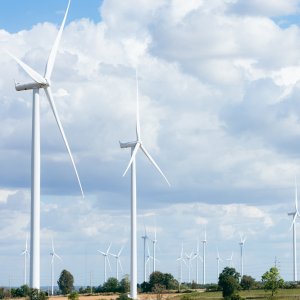
IEA: A Pathway Towards Net-Zero
 By Cinthya Alaniz Salazar | Journalist & Industry Analyst -
Tue, 07/13/2021 - 17:14
By Cinthya Alaniz Salazar | Journalist & Industry Analyst -
Tue, 07/13/2021 - 17:14
Mexico's government commitments made at the 2015 Paris Agreement “fall far short of what is required” to meet net-zero emissions by 2050, this according to a report published by the International Energy Agency (IEA). Even if governments today were able to successfully meet their pledges it would still leave around 22 billion tonnes of CO2 emissions worldwide, equivalent to a 2.1°C increase by 2100. The report has two main objectives. First, to outline a “feasible, cost effective and socially acceptable” net-zero pathway that would ensure stable and affordable energy production for universal access. Second, to inform policy makers and high-level negotiations at the 26th Conference of the Parties (COP26) of the United Nations Framework Convention on Climate Change in Glasgow in November this year.
The report sets out more than 400 milestones, but highlights seven key priority actions needed today and these include:
Clean Energy Expansion: Immediately, the report calls on governments to strengthen polices around clean energy so as to speed the deployment of all clean and efficient energy technologies.
Boost Innovation: Federal and private R&D spending must increase and reprioritized in renewable energy and CCUS technologies.
Prepare Workforce for Transition: The clean energy transition is predicted to produce a loss of 5 million jobs in fossil fuel industries, but create 14 million jobs by 2030 requiring retraining, reallocation and producing qualified talent.
Establish Short and Long-Term Targets: Long-term objectives need to be linked to measurable short-term targets and polices to facilitate an orderly transition.
Surge in Clean Energy Investment: Policy needs to incentivize international public finance and provide a stable investment environment in order for the private sector to invest confidently.
Address Security Risks: Potential vulnerabilities such as concentrated reliability of supply and cybersecurity risks need to be assessed and have a corresponding protocol.
Increased International Cooperation: A global problem of this magnitude requires governments to work together to coordinate regional and cross border efforts.
According to the report, solar energy should become the predominant fountain of renewable energy by 2050, accounting for one-fifth of energy supplies. Since PV capacity is expected to increase 20-fold between now and 2050 it is expected to be the biggest contributor to electricity generation. Solar GW production capabilities need to increase by 630 GW annually, roughly the instalment of the world’s current largest solar park daily in order to meet the demands of a growing global population. In order to meet these projections however, large sums of investment capital need to be injected into infrastructure which stands to be US$820 billion by 2030 and US$1 trillion by 2040.
Respectively, fossil fuel energy production which produces about four-fifths of the total energy supply must be reduced to slightly over one-fifth by 2050. To meet this objective, the use and investment in the use of fossil fuels should fall dramatically, equivalent to an overall reduction of 90 percent for coal, 75 percent for oil and 55 percent for natural gas. In other words, “no exploration for new resources is required…[or] necessary.” As it stands oil and gas investment averages about US$350 billion each year, after 2030 total upstream investment should be slashed to around US$170 billion.
Recurring and exacerbated natural disasters have underlined the need for immediate and urgent address to the growing climate crisis. The International Energy Agency has published a report in an effort to inform and possibly guide policy makers towards accomplishing their commitment to the Paris Climate Agreement. Primordially, international governments must signal the market that a transition to clean energy must be done as quickly as possible to boost investment and innovation. In addition, this must be done in conjunction with a decisive move away from fossil fuels. However, this report is just that without action. After COP26 members meet in November we will have a greater understanding of the commitments international governments are willing to make and whether the world will be able to meet net-zero by 2050.
















